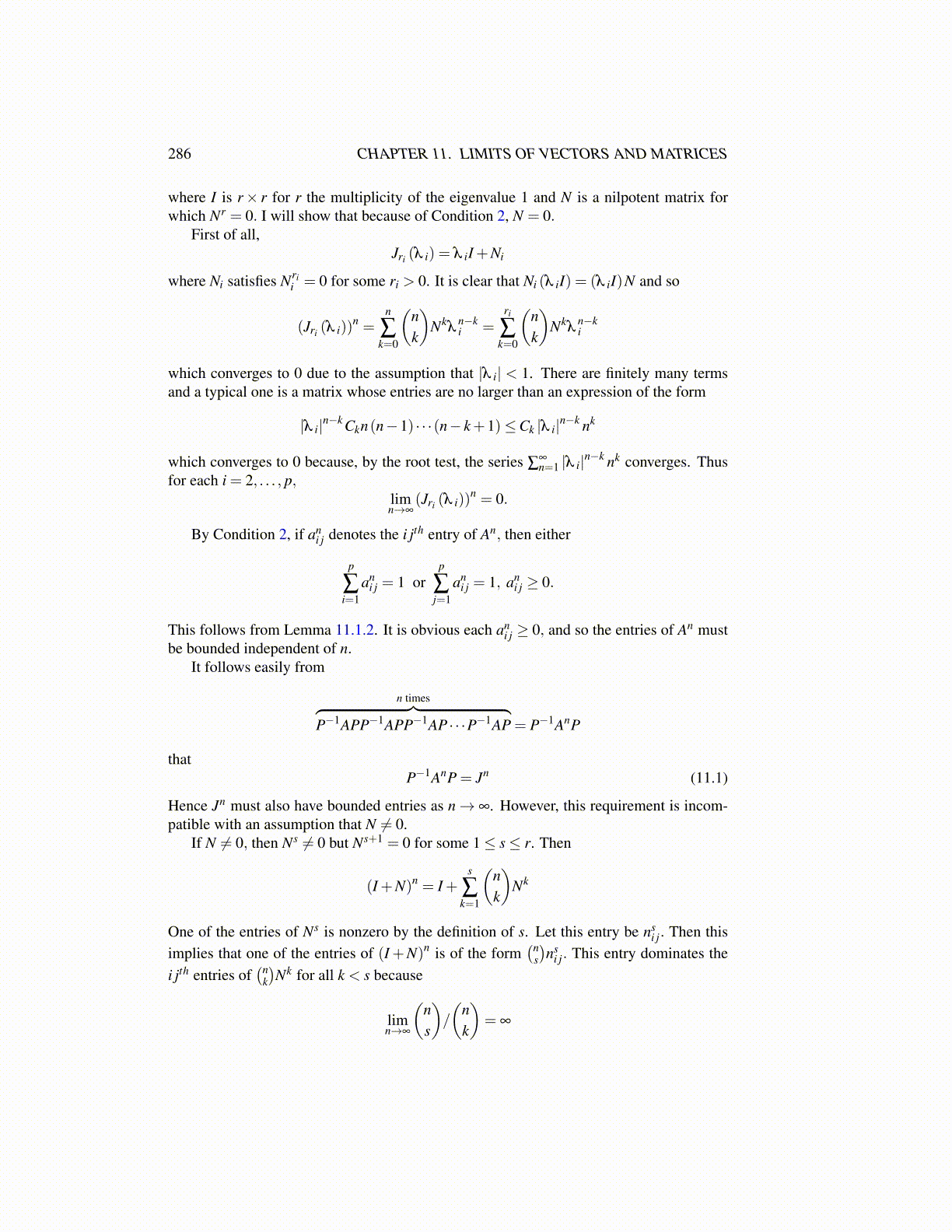
286 CHAPTER 11. LIMITS OF VECTORS AND MATRICES
where I is r× r for r the multiplicity of the eigenvalue 1 and N is a nilpotent matrix forwhich Nr = 0. I will show that because of Condition 2, N = 0.
First of all,Jri (λ i) = λ iI +Ni
where Ni satisfies Nrii = 0 for some ri > 0. It is clear that Ni (λ iI) = (λ iI)N and so
(Jri (λ i))n =
n
∑k=0
(nk
)Nk
λn−ki =
ri
∑k=0
(nk
)Nk
λn−ki
which converges to 0 due to the assumption that |λ i| < 1. There are finitely many termsand a typical one is a matrix whose entries are no larger than an expression of the form
|λ i|n−k Ckn(n−1) · · ·(n− k+1)≤Ck |λ i|n−k nk
which converges to 0 because, by the root test, the series ∑∞n=1 |λ i|n−k nk converges. Thus
for each i = 2, . . . , p,limn→∞
(Jri (λ i))n = 0.
By Condition 2, if ani j denotes the i jth entry of An, then either
p
∑i=1
ani j = 1 or
p
∑j=1
ani j = 1, an
i j ≥ 0.
This follows from Lemma 11.1.2. It is obvious each ani j ≥ 0, and so the entries of An must
be bounded independent of n.It follows easily from
n times︷ ︸︸ ︷P−1APP−1APP−1AP · · ·P−1AP = P−1AnP
thatP−1AnP = Jn (11.1)
Hence Jn must also have bounded entries as n→ ∞. However, this requirement is incom-patible with an assumption that N ̸= 0.
If N ̸= 0, then Ns ̸= 0 but Ns+1 = 0 for some 1≤ s≤ r. Then
(I +N)n = I +s
∑k=1
(nk
)Nk
One of the entries of Ns is nonzero by the definition of s. Let this entry be nsi j. Then this
implies that one of the entries of (I +N)n is of the form(n
s
)ns
i j. This entry dominates thei jth entries of
(nk
)Nk for all k < s because
limn→∞
(ns
)/
(nk
)= ∞